Resignation Letter Template for Probation Period
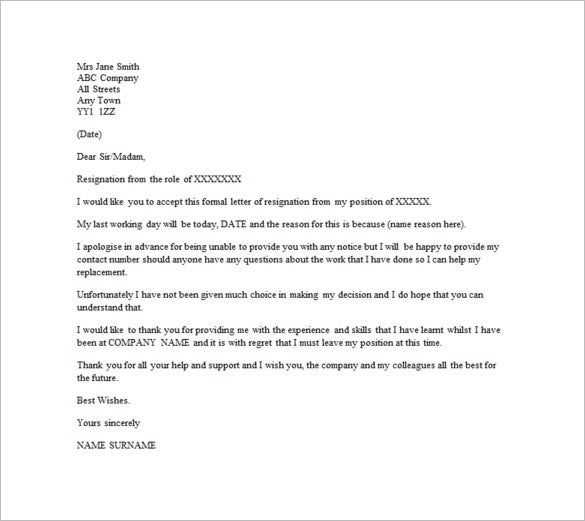
Leaving a job before completing the initial assessment phase is sometimes necessary. The process involves crafting a clear and polite notification to your employer. Ensuring that the message is professional and respectful can make the transition smoother and leave a positive impression, even if the decision to part ways is mutual. Below is a guide on how to navigate this situation and the key elements to include in your message.
Essential Components of Your Message
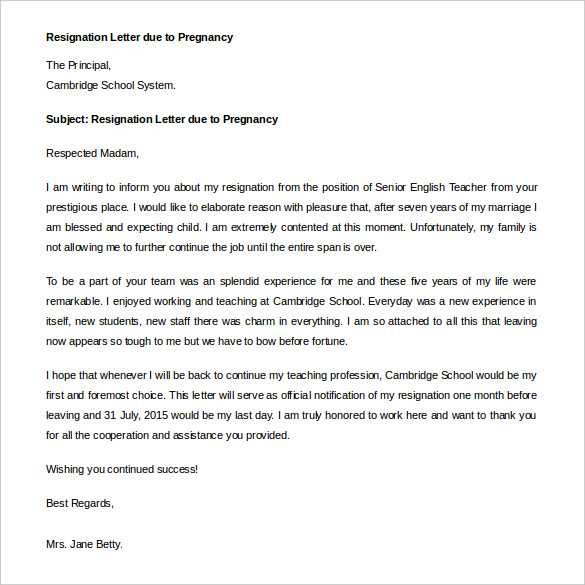
When informing your employer about your decision to leave, certain details should always be addressed. This ensures clarity and professionalism:
- Expression of Gratitude: Acknowledge the opportunity to work with the company.
- Clear Intent: Clearly state your intention to leave, specifying your last day of work.
- Reason for Departure: While not always necessary, briefly explaining your decision can be helpful.
- Offer Assistance: Show willingness to help with the transition process if possible.
Crafting the Right Tone
Your message should maintain a neutral and polite tone. Even if your reasons for leaving are personal or related to dissatisfaction, it’s important to remain diplomatic. Keeping the tone respectful helps avoid burning bridges and maintains professionalism throughout the process.
Timing of the Notification
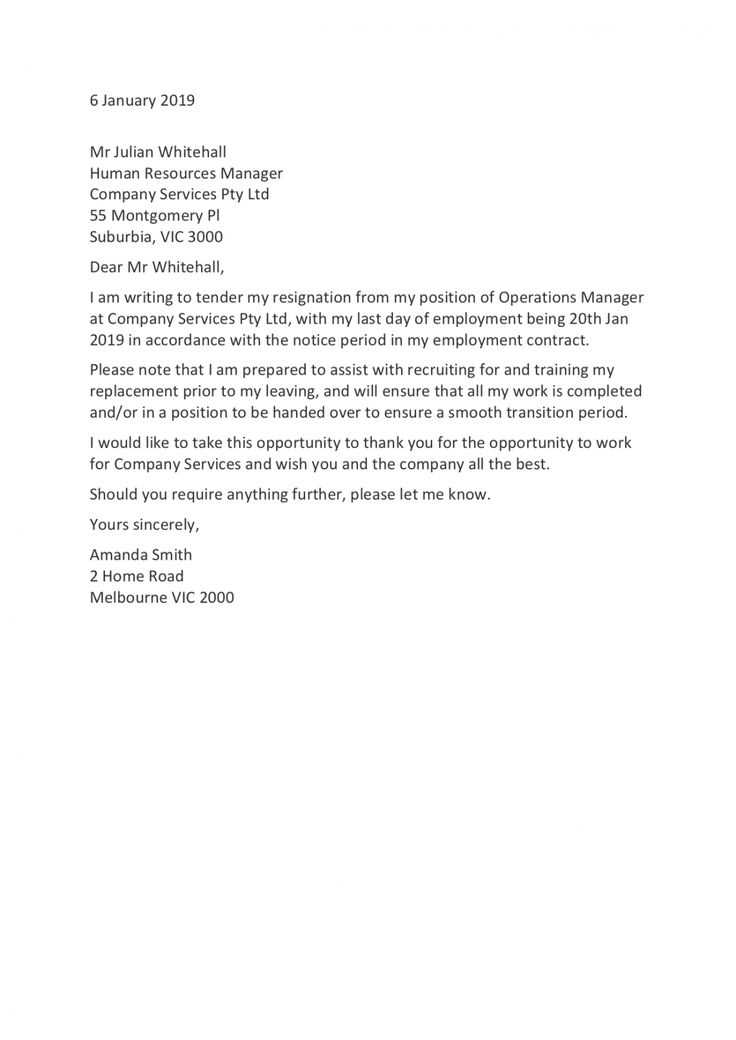
While it’s important to leave on good terms, timing is also crucial. Giving your employer adequate notice allows for a smoother handover of responsibilities and ensures that both sides can plan accordingly. Typically, a week or two is considered an appropriate time frame, but it may vary depending on the company’s expectations and your role.
Example of a Professional Goodbye
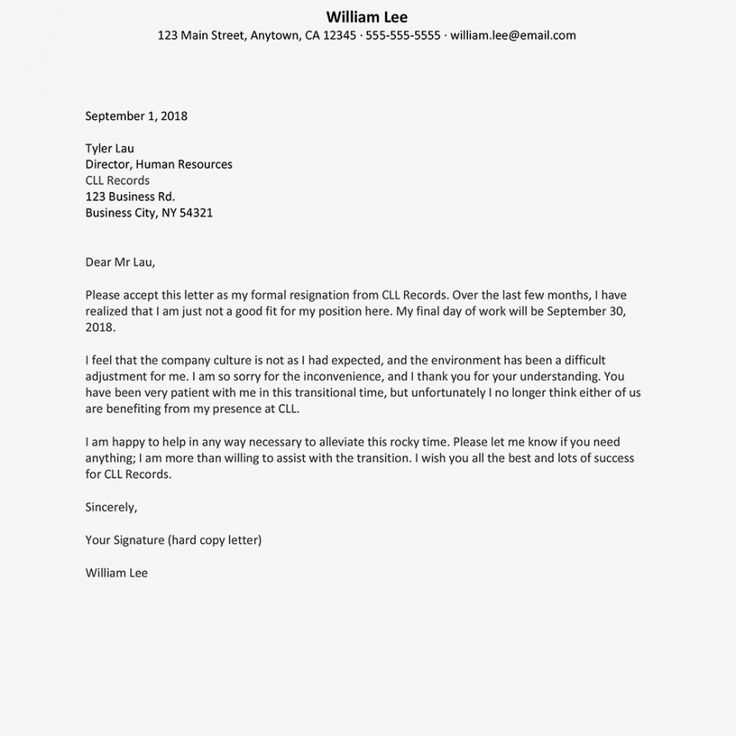
Here’s a brief example of how to frame your departure notification:
Dear [Manager's Name], I hope this message finds you well. I wanted to inform you that I have decided to move on from my position with [Company Name]. My last day of work will be [date]. I greatly appreciate the opportunity to be part of the team and have learned a lot during my time here. If there’s anything I can do to assist with the transition, please do not hesitate to let me know. Thank you again for everything. I wish you and the team continued success. Sincerely, [Your Name]
Final Thoughts
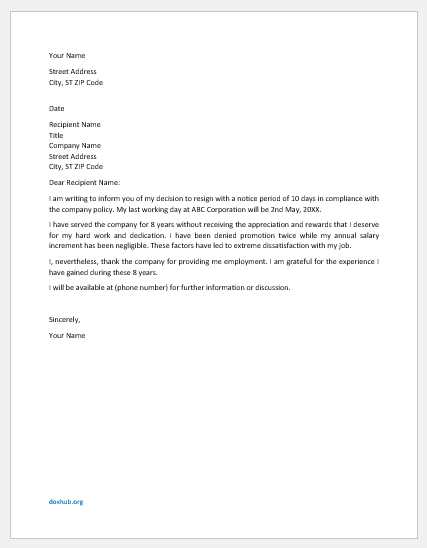
Exiting a job early doesn’t have to be a negative experience. By keeping your communication professional, expressing gratitude, and offering to assist with the transition, you leave behind a positive impression and maintain good relationships for future opportunities.
How to Quit Professionally Early in Your Employment
Key Elements of a Departure Notification
Professional Tone in an Early Exit Notice
Timing and Delivery of Your Notice
What to Include and What to Omit
Sample Example for Early Exit Notification
Next Steps After Sending Your Notice
When deciding to leave a job early, it’s important to communicate your decision in a way that remains professional and respectful. This section will guide you through crafting a thoughtful and effective message that ensures clarity while maintaining positive relationships with your employer.
Key Elements of a Departure Notification: Your message should cover the essential points: state your intent to leave, specify your last working day, express appreciation for the opportunity, and offer assistance with the transition. This structure ensures that your message is clear, professional, and courteous.
Professional Tone in an Early Exit Notice: It’s crucial to maintain a neutral and respectful tone. Avoid emotional language and focus on being polite, clear, and concise. Even if your decision is due to dissatisfaction, it’s best to keep your communication neutral to preserve a positive relationship.
Timing and Delivery of Your Notice: Provide adequate notice based on your company’s policies or your role. This is typically one or two weeks but can vary. Send your message in advance and give your employer enough time to manage the transition smoothly. Email is often the most appropriate form of communication, but in-person discussions can be a good option if the situation allows.
What to Include and What to Omit: Be sure to include your departure date, a brief expression of thanks, and an offer to help with the transition if feasible. Avoid overly detailed personal reasons unless you feel comfortable sharing them. There’s no need to go into great detail, as brevity is key.
Sample Example for Early Exit Notification: Here’s a sample of what your notice might look like:
Dear [Manager's Name], I hope you are doing well. I would like to inform you that I will be stepping away from my position at [Company Name]. My final day of work will be [Date]. I appreciate the opportunity to contribute to the team and am grateful for the experience. If there’s any way I can assist with the transition, please don’t hesitate to reach out. Thank you once again for everything. Sincerely, [Your Name]
Next Steps After Sending Your Notice: After sending your message, be prepared to wrap up your duties. This might include handing off tasks, completing projects, or meeting with your manager to discuss the next steps. Ensure you leave on good terms by offering your help during the transition period.